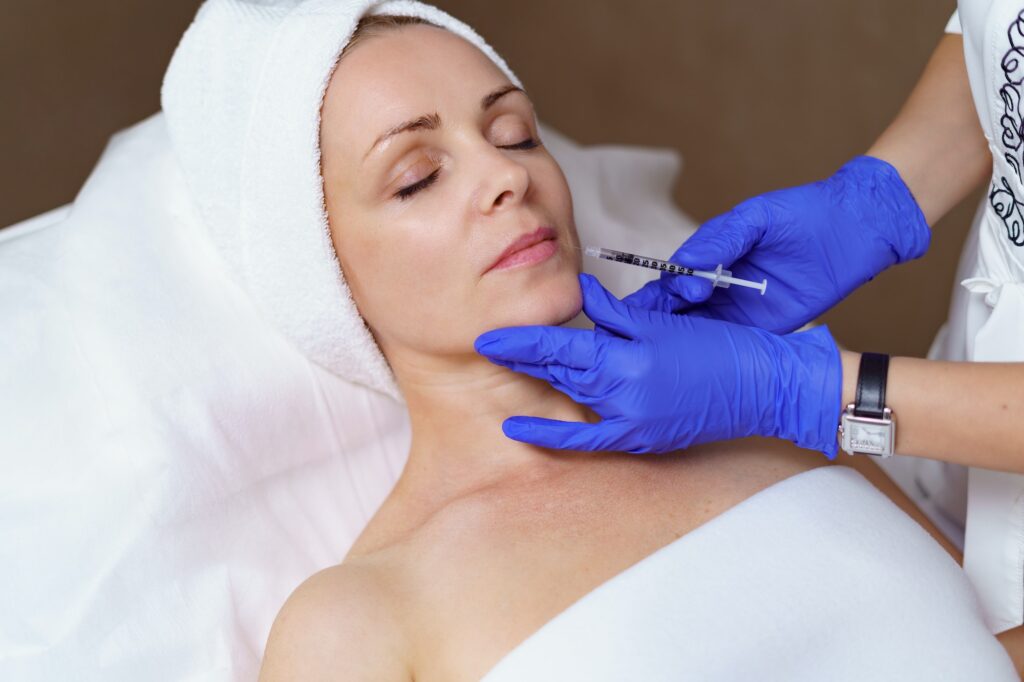According to the American Society of Plastic Surgeons (ASPS), over seven million BOTOX® injections (also known as Botulinum Toxin injections) were given in the U.S. in 2020 for treating wrinkles and medical issues. In comparison, just over two million dermal filler injections (Juvederm, Restylane, etc.) were administered in 2018. So, it’s easy to tell which noninvasive, skin rejuvenating injectable is the most preferred among people who want to turn back their “skin clock” — BOTOX®!
Dermatologists have also learned how to optimize the amazing results of BOTOX® injections by studying the effectiveness of different types of BOTOX® aftercare techniques. Here are the top 10 BOTOX® aftercare recommendations that BOTOX® injectors strongly urge their patients to follow to enjoy youthful, smooth facial skin. LKN Weight Loss and Wellness provides quality skincare solutions, including BOTOX® injections. Contact our office for an appointment or to have any of your questions answered.
Your skin care professional will provide detailed BOTOX® aftercare instructions so you’re sure to experience the full effect and benefit from your treatment. Here are a few things to keep in mind before returning to your normal activities.
Some people experience swelling and discomfort around injection sites. You can safely apply a cold compress on treated areas to relieve discomfort and minimize swelling. However, don’t put pressure on the cold compress. Just gently lay the compress on the swelling. Slight bruising and swelling near injection sites are commonly reported side effects of BOTOX® injections that diminish within 48 hours after treatment. Taking NSAIDs or applying heat to swollen injection areas would not only worsen discomfort, it could cause migration. This is strongly advised against.
About an hour after you receive BOTOX® injections, exercise your facial muscles by frowning, squinting, smiling, and raising your eyebrows for 30 seconds. Repeat these exercises several times throughout the day to help the BOTOX® solution infiltrate targeted muscles. However, be aware that you don’t have to exercise your face to get the same great results from BOTOX®. Moving facial muscles and performing recommended facial exercises may simply expedite the reduced appearance of wrinkles and fine lines by approximately 1 day.
Strenuous activity increases heart rate and blood flow. While it’s fine to take a leisurely walk after receiving BOTOX® injections, stay off the Ellipticals and Nordic Tracks for at least 24 hours. Heavy exercise may inadvertently spread BOTOX® to other areas, which could decrease the effectiveness of BOTOX® and cause unintended side effects. Strenuous exercise after treatment could also increase the risk of swelling and bruising around the treatment areas.
Applying liquid foundation, blush, face powder, eyeshadow, and even eyebrow pencil can stimulate the skin enough to cause dispersal of BOTOX® to unintended areas. People who get BOTOX® injections for medical reasons should also avoid pressing on injection sites and the skin surrounding the injection sites. It is perfectly fine to apply cosmetics the following day.
Lying down or bending over for more than a few minutes following BOTOX® treatment may disperse the BOTOX® solution from its intended site. If you are someone who bruises easily, sitting upright can also help reduce bruising by preventing increased blood flow to your face.

The first night after your BOTOX® treatment, sleep on your back as much as possible to minimize pressure on facial muscles. Of course, if your injections were meant to reduce forehead wrinkles or brow furrowing, you won’t have to worry about the pressure of your face against your pillow. However, BOTOX® injections for treating crow’s feet are typically given near or on the side of the face. If you tend to sleep on your side, try placing pillows next to your body to stop you from turning over while sleeping.
Beer, wine, and hard liquor contain ethanol, a substance that dilates blood vessels and increases blood pressure. When blood vessels expand, this allows more blood to flow rapidly throughout your body. Increased blood flow means possible worsening of swelling and bruising at and around injection sites. A good rule of thumb regarding alcohol and BOTOX® aftercare: avoid alcohol 48 hours before and after BOTOX® treatment.
Wait for at least 24 to 48 hours before you get facials, microdermabrasion, laser skin therapy, massages. This gives the BOTOX® time to work its magic on muscles responsible for wrinkles.
Avoid full sun exposure for the rest of the day after receiving BOTOX® injections. Any kind of heat (including hot showers) will increase your blood pressure and promote bruising. If possible, avoid going out in the sun for one to two days to fully reduce the potential of migration due to sunlight and heat. Also, stay out of tanning beds, saunas, and hot tubs for at least 24 hours. (When it’s safe to go back into the sunshine, be sure to use a high-quality sunscreen.)
Most people do not need to take any painkillers such as acetaminophen or ibuprofen after having BOTOX® injections because any discomfort is almost always minimal and temporary. Although rarely reported, headaches may emerge in some people following BOTOX® treatments, in which case acetaminophen or ibuprofen can be taken. However, if you are taking a prescription blood thinner like Warfarin, do not stop taking it until you have talked to your doctor.
Schedule Your Service Today
Fueled by Antilles Digital Media. 2022 @LKNWeightLoss&Wellness All Rights Reserved